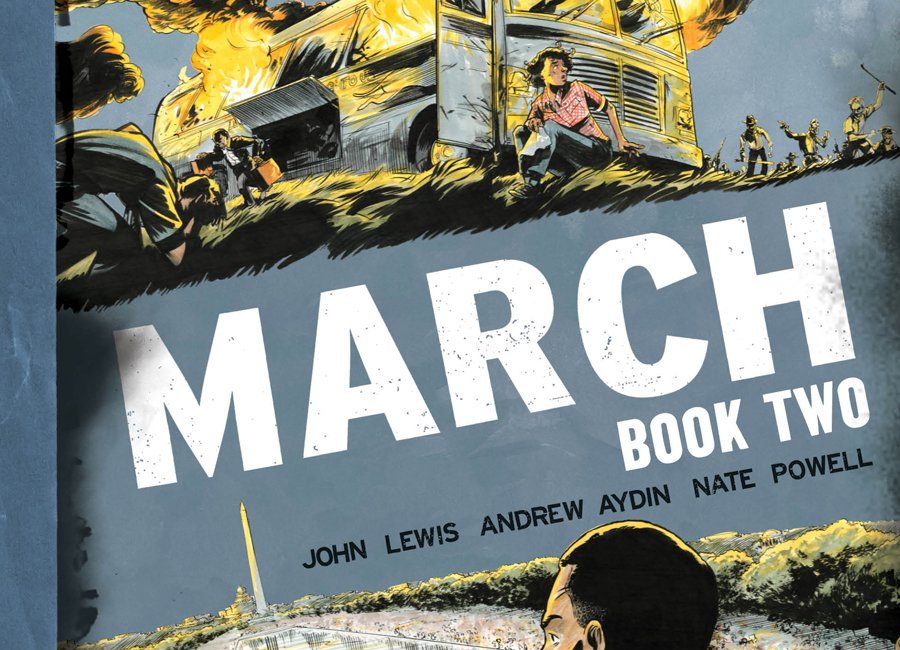
Panel Discussion: A Hit Graphic Novel Gets a Sequel
Editor’s Note: March: Book Three, the third installment in the series, won a National Book Award in 2016—making it the first graphic novel ever to win such an honor.
As book collaborators go, longtime Georgia congressman John Lewis is an enviable one. The civil-rights leader helped plan the March on Washington in 1963 and has been reelected 13 times. So when Bloomington illustrator Nate Powell’s publishing house approached him about partnering with Lewis on a graphic novel called March: Book One about the congressman’s experiences in the ’60s, Powell was definitely on the bus. The book went on to become a bestseller, and this month, March: Book Two hits stands. Here, Powell outlines what went into one of the more dramatic pages.
“After the success of the Nashville Student Movement’s ‘sit-in’ campaign to push the city to desegregate its lunch counters, the activists expanded the front. This scene took place amidst 1961’s ‘stand-in’ campaigns to challenge segregated movie theaters. Protestors had two objectives: establish that the theaters wouldn’t sell tickets to black customers, then tie up the ticket lines by keeping protestors funneling through the lines, being refused service again and again.”

“The first young man struck was Tennessee State University student Fred Leonard, a dedicated activist and Freedom Rider. The second protestor struck by the policeman was LeRoy Wright. Leonard’s rib was cracked, and Wright’s head split open, and they were both treated that night in the same emergency room.”
“Congressman Lewis and his coauthor Andrew Aydin worked up the script through a series of audio interviews. Every page was drawn five times: a script sketch, which is broken down into a thumbnail-sized sketch, then final pencils, inks, and finished washes.”
“One of the most significant details from [the page below] is the on-site reporter snapping pictures of the action. Congressman Lewis remembers those moments very clearly amidst the early days of the civil-rights movement—a shift in which the press begins to follow the actions themselves, not just responses from the establishment. Only this kind of coverage could have brought the faces and missions of the movement to millions of otherwise-indifferent white dinner tables.”

“This scene, and much of Book Two, depicts the ugly reality of ‘escalated control.’ In Book One, we covered the subtle shift in language, tone, and attitudes from many white restaurant employees as activists sought fair treatment as paying customers. When words were no longer enough, the protestors were met with violence. As Book Two opens, activists are met almost immediately with physical assault, humiliation, and attempted murder. This scene captures one of the first instances of the police themselves getting violent with the protestors.”
“Yes, The Ten Commandments was the actual movie screening that night. You just can’t make up that stuff!”
“Congressman Lewis chose me based on the sample pages I submitted—my style is to do representational work that still has room for expressive characters. And being a Southerner [Powell spent his childhood in Montgomery, Alabama] didn’t hurt.”





